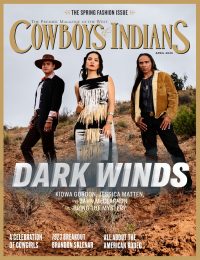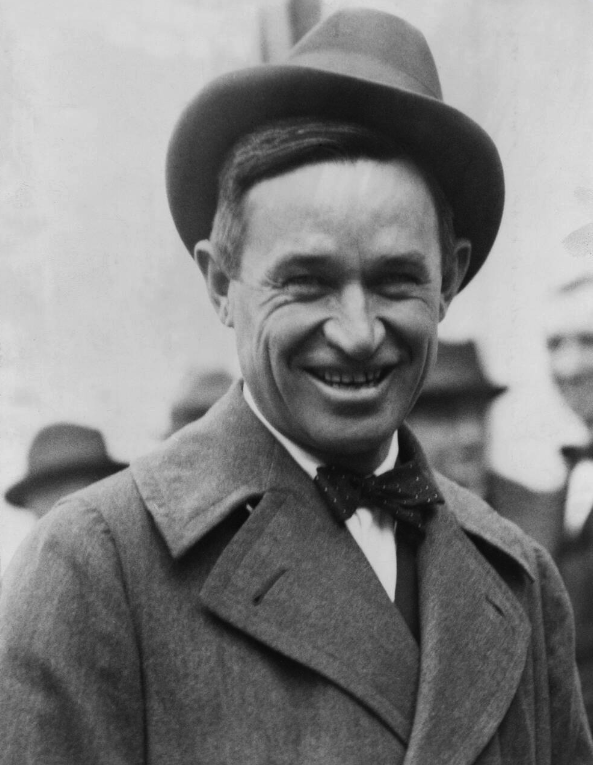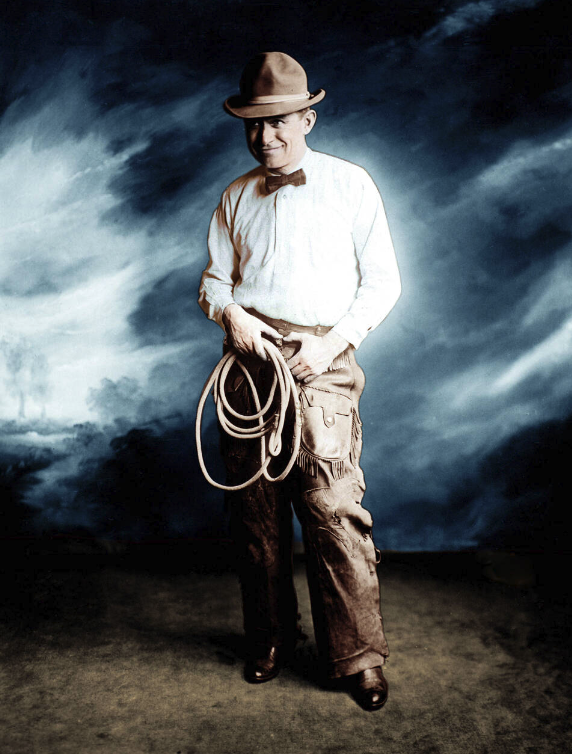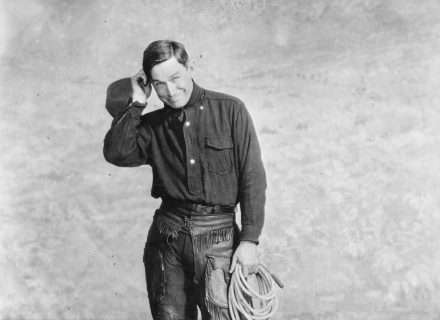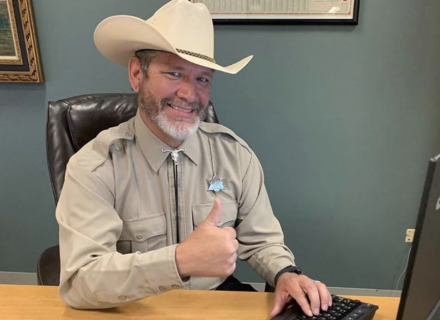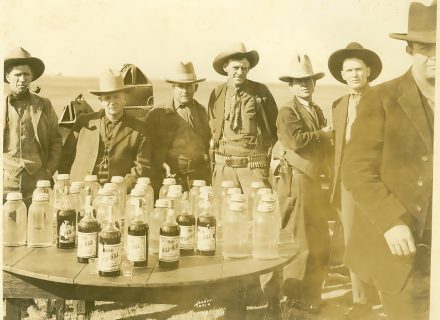As Will Rogers’ The Illiterate Digest turns 100, the crucial quest goes on to enrich the legacy of “America’s favorite son” for future generations to come.
In 1924, Oklahoma’s “favorite son” Will Rogers was already a star. As a trick roper, a vaudeville comedian, and a political satirist, Rogers captivated an entire nation with his wit, good nature, and his spot-on commentary on human nature and politics.
That same popularity drove him to publish The Illiterate Digest, a humor-filled collection of lectures, speeches, and commentary that Rogers was famous for. Now, nearly 100 years later, the book is just as relevant as it was a century earlier.
Rogers once famously said, “I never met a man I didn’t like,” and the feeling was mutual. When The Illiterate Digest turns 100 in 2024, it will pay tribute to a man who at one time was the most popular person in the world.
However, despite his legacy as the top radio personality, the No. 1 box office draw, the nation’s most popular and in-demand public speaker, and the most-read newspaper columnist in history, the memory of Rogers and how he helped shape America is slowly sliding into the hazy forgetfulness of history.
“Today, there are very, very few people alive who remember Will. So everybody who comes here now is coming because they’ve heard about Will from their grandparents, or they come because they know their grandparents love Will,” says Tad Jones, executive director of the Will Rogers Memorial Museum in Claremore, Oklahoma. “Will Rogers was a great citizen role model, and part of what we do here at the Will Rogers Museum is to show what kind of person he was. Most people are amazed at what a big star he was.”
Long after his untimely death in 1935 in a plane crash that also took the life of famed Oklahoma aviator Wiley Post, Rogers continues to influence popular culture, political commentary, and even healthcare. Museums and foundations such as the Will Rogers Museum are on a mission to perpetuate his history and accomplishments, but every year, keeping that legacy alive and relevant grows harder and harder.
A Man For All Seasons
Will Rogers was many things—comedian, newspaper columnist, author of numerous books, and philanthropist. He was the top box office draw for both silent movies and traditional movies, making him among the first to become a true movie star. But it was his personality that drove his enormous popularity. Although his commentary and aw-shucks wit could be sharp at times, he managed to deliver a stark, incisive look at the world without being malicious or ugly.
The whole world grieved after Rogers’ and Post’s plane went down near Point Barrow, Alaska, killing both American heroes on August 15, 1935. Rogers was honored in a manner usually reserved for presidents and heroes. Congress let out for the day in respect. Federal buildings and banks closed, and radio shows went silent. Flags were flown at half-staff, and more than 12,000 motion picture theater screens went dark for two minutes at 2 p.m. on August 22, 1935, in tribute.
Why was he so appealing to so many people? Jones knows why. “He worked hard. He treated people with respect. He looked at the good in people. He didn’t take things too personally. He laughed. These are the things that made a good person like Will Rogers, and we think that’s a great story to share with kids today. We share that if you can implement these traits, then you can succeed, have good friendships, and have a good and fulfilling life as Will Rogers did.”
People all over the world appreciated him. “It didn’t matter your race, religion, ethnic background, or income levels,” Jones says. “Everybody loved Will Rogers.”
A Humble Beginning
William Penn Adair Rogers was always a capricious child. Born on Election Day November 4, 1879, in Indian Territory, the youngest of eight children, Will was destined to be a comedian and showman. He would often get in trouble for roping girls at school, and his father was so fed up with his antics that he was eventually enrolled in military school.
“He never got past the 10th grade, but he did have a passion for learning, and he became an avid reader. But, when he was growing up, he loved roping and loved being a cowboy,” Jones says.
After school, Will took over his father’s Dog Iron Ranch, but after three years, he reckoned he wasn’t one for the business side of running a ranch. He sold the ranch back to his father and decided to try his hand at being a gaucho in Argentina in 1902. “He went to Argentina with a friend, but Will’s friend went back home, so Will was by himself,” Jones says. “Will got on a boat with a bunch of cattle and headed to South Africa instead.”
Bad luck seemed to follow the young cowboy, who found himself broke in Africa. However, when things happened to go wrong, Will always found a way to bounce back. He saw a sign for the Texas Jack’s Wild West Show advertising a performing position for someone who could do trick roping. As a lifelong trick roper, Will found his first show biz job. And he was good at it, too, becoming a well-known performer on the Wild West show circuits.
He never got past the 10th grade, but he did have a passion for learning, and he became an avid reader. But, when he was growing up, he loved roping and loved being a cowboy,
In 1905, he moved to New York City with his trick-roping act, and for 50 weeks a year, according to a 1915 New York Times article, he performed for various vaudeville theaters. He also married his childhood sweetheart, Betty Blake, on November 25, 1908.
In fact, it was Betty who suggested Will add comedy and political satire to his shows.
“That’s when his star just took off,” Jones says. “He became like Jay Leno or Jimmy Fallon or Johnny Carson. He hosted a show every night that was unique. Everyone couldn’t wait to see who Will was going to make fun of that night.”
In 1915, Rogers signed on with Florenz Ziegfeld’s Midnight Frolic and went on to star with the Ziegfeld Follies on Broadway in 1916.
Will Becomes A Star
With his success in the Follies and his natural charisma, Will branched out to become an actor, starring in his first silent movie, Laughing Bill Hyde, in 1918. He starred in 50 silent films and 21 “talkies,” becoming one of the first true movie stars alongside Charlie Chaplin.
“Charlie Chaplin was the top in the silent movies, and Will did what they call the talkies,” says Todd Vrandenburg, executive director at the Will Rogers Motion Picture Pioneers Foundation. He also had a popular daily syndicated column, authored six books, including The Illiterate Digest, and had one of the most popular radio shows in the world. He was even nominated for governor of Oklahoma, which he declined. He was a commentator who had the most popular daily syndicated column in the country, writing more than 4,000 nationally syndicated newspaper columns in his life. “He called politics ‘the best show in the world’ and described Congress as the ‘national joke factory,’” according to cmgww.com, the official website of Will Rogers. “His folksy humor and honest, intelligent observations about the government and America earned the respect of the nation.”
Adventure still roared through Will’s blood, and as a journalist and an aviator, he helped develop the United States Air Force. So when he and Post joined forces to fly to Alaska to discover a new mail route in 1935, no one had to think twice.
On August 15, 1935, Will and Wiley’s plane crashed near Point Barrow, taking both of their lives. The world reeled with shock and mourned the loss of their “favorite son.”
Remembering Will Today
After Will’s untimely death, Will’s wife, Betty, built a memorial in Claremore, Oklahoma, which was dedicated in 1938 by President Franklin Roosevelt. Though he was laid to rest in California, Will’s body was moved in 1944 to rest at the Will Rogers Memorial Museum, along with his son Fred, who died at age 2. That same year, Betty passed away, and she joined her husband and son in Claremore.
Will Rogers’ home and 359-acre ranch in California were donated by Betty to the California State Parks, and in 1944, Will Rogers State Historic Park was created. Its 31-room ranch house came complete with a stable, corrals, a riding ring, polo field, golf course, roping arena, and riding trails. A short ride to the west is Will Rogers State Beach, stretching along the Pacific just north of Los Angeles.
A state park isn’t the only legacy to bear Will’s name. In 1936, a tuberculosis hospital in Saranac, New York, that housed vaudeville performers who were ill was renamed the Will Rogers Hospital, and the Foundation of Motion Picture Pioneers (FMPP) was created as a management organization to take care of the hospital.
“The hospital was a tuberculosis treatment center all the way up till about the late Fifties. Once tuberculosis got under control, the Foundation expanded into other pulmonary issues, like emphysema and bronchitis,” Vrandenburg says. In 2002, the FMPP merged with the Will Rogers Memorial Fund to create the Will Rogers Motion Picture Pioneers Foundation, expanding into the most meaningful charities with ties to the film industry.
Well, all I know is what I read in the newspapers. ~ Will Rogers
Another indelible mark on the culture: In 1952, Route 66 was dedicated as the Will Rogers Memorial Highway after the movie The Will Rogers Story debuted. It starred Will Rogers Jr. playing his dad, and the entire cast drove from Chicago to Santa Monica along the famed “Mother Road” in honor of Will.
Jennifer Rogers-Etcheverry, Will’s great-granddaughter, is among those fighting to keep the legacy of Will Rogers alive. As social media grows and time passes, she finds less and less is said about “America’s favorite son.”
“I grew up in New Mexico and he wasn’t really talked about much in our family,” Rogers-Etcheverry says. “I was in grammar school and back then, you learned about people like him in your history books. I remember learning a little bit about him in school and traveling to California or Oklahoma on vacations to visit the museum or have an event. But it really wasn’t until 1991, when the Will Rogers Follies debuted on Broadway, that I truly even understood who he was and the magnitude that he had.”
Rogers-Etcheverry is one of the founders of the foundation in California Pacific Palisades that supports Will Rogers State Historic Park. The foundation board raises funds that stay strictly at that park.
“It stuns me that people don’t know who Will Rogers is, but I guess time marches on. It’s hard, and that’s my job and role as the family spokesperson. I just want to keep his legacy alive.”
And she wants to keep it true to the man. “People approach me the time wanting to do a documentary or do a film about Will Rogers. They want to throw in scandal, but they can’t find any scandal on Will Rogers,” she says. “He really was just a good ol’ boy. There hasn’t been anyone before or since that is or was as loved as Will Rogers.”
More About America’s Favorite Son
Learn about “America’s Favorite Son” at various museums and sites throughout America, including the Will Rogers Birthplace Ranch in Oologah, Oklahoma, the home where Will Rogers was born on the 400-acre living ranch.
Efforts to preserve Rogers’ memory and legacy continue, most recently with a formal agreement between the Cherokee Nation and the Oklahoma Historical Society. In November 2020, the Cherokee Nation purchased Will Rogers’ home and family ranch in northeastern Oklahoma from the Oklahoma Historical Society with plans to renovate and restore the historic property.
“He was called ‘The Cherokee Kid’ in his early entertainment career and always embraced his culture and his tribe. No matter how popular he was, Will Rogers was always a Cherokee, and he talked about it. He reminded people every day that there are Native people of this land still alive and who remain a vibrant part of America’s tapestry. It is quite fitting that the Cherokee Nation will now have an opportunity to continue telling this story from such a unique perspective,” Cherokee Nation Principal Chief Chuck Hoskin Jr. said in a written statement.
Of course, the Will Rogers Memorial Museum in Claremore is the resting place of Will Rogers and includes the largest collection of Will Rogers memorabilia in the world and all his writings. The museum also has 12 galleries, a children’s museum, theater, and library.
And, finally, in January of this year, OU Press, reissued Will Rogers and His America by Gary Clayton Anderson (with a new afterword by the author, along with study and discussion questions for every chapter), explaining in its catalog that “Although Rogers is remembered today for his success in vaudeville and the nascent American film industry, history has largely forgotten his considerable influence as a political commentator, an aspect of Rogers’ life that Gary Clayton Anderson explores at length in this brief but complete biography.”
This article appears in our May/June 2023 issue, which can be found on newsstands or through our C&I Shop.



